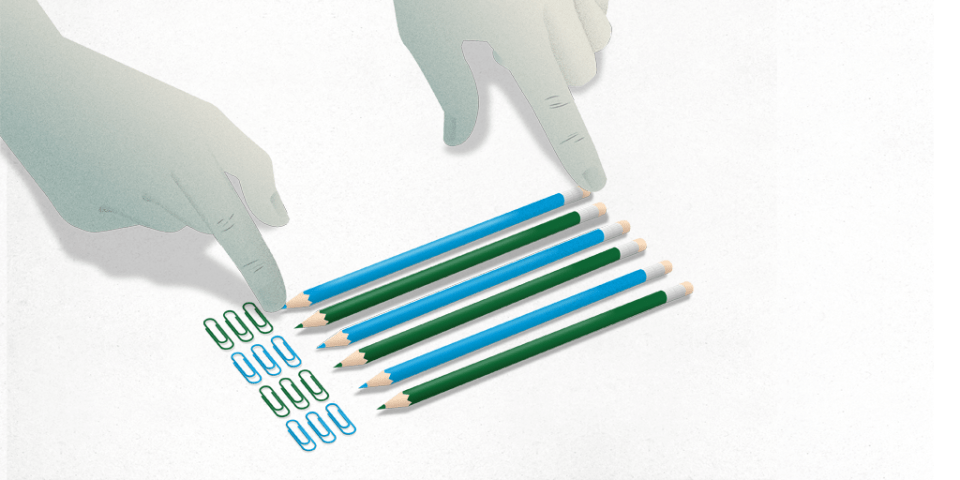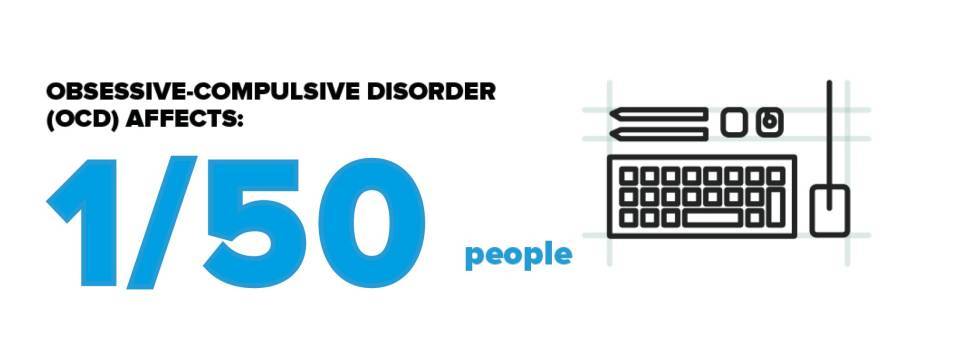What is Obsessive-Compulsive Disorder (OCD)?
Obsessive‑compulsive disorder is a disease characterised by involuntary thoughts, mental images or urges (obsessions) that impel the individual to perform an action repeatedly (compulsions) to alleviate the distress they cause. Although everybody has these thoughts, images and urges, the differentiating feature is whether they interfere in everyday life and take up a lot of time.
Obsessive Compulsive Disorder explained in first person
To diagnose obsessive compulsive disorder, these obsessions and compulsions have to cause high levels of anxiety and, furthermore, a notable disfunction. In other words, they have to take up a lot of our time throughout the day.
Be patient and understand what OCD really is. Don't judge. Understanding what it consists on, how it works, what the symptoms are and how the person suffering from it might feel.
Someone with obsessive‑compulsive disorder (OCD) has obsessions and compulsions that cause them significant difficulties in everyday life.
Obsessions are repetitive and uncontrollable thoughts, mental images or urges that cause negative feelings in the individual (anxiety, guilt, etc.) and do not form part of their normal worries. Examples of common obsessions are the fear of feeling unclean or contaminated; the idea that something terrible will happen (for example, your house will burn down); and the impulse to do something very negative when you do not want to do (for example, attacking someone). Children are often afraid of being responsible for harming other people.
Compulsions are behaviours or mental acts the person routinely performs to eradicate the distress caused by the obsessions. Compulsions are also known as rituals. Examples include repetitive washing of a body part because the individual feels dirty; repeatedly checking the gas is turned off or the front door before leaving the house; or mentally repeating a phrase to calm oneself down. In children, it is common for them to check or repeat a certain number of times activities of daily life or the order of their objects in a symmetrical way.
Most people with OCD have both obsessions and compulsions, although some have only obsessions. In childhood and adolescence, compulsions often appear before obsessions and can sometimes appear without the child being able to explain the obsession.
People with OCD are usually aware their obsessions and/or compulsions are irrational (illogical) or exaggerated (knowing it is unlikely that what they think will happen will actually happen), but they struggle to stop their obsessive behaviour and control their compulsions. Compared to adults, children and adolescents with OCD sometimes find it harder to recognise that obsessions and/or compulsions are irrational or exaggerated.
What is NOT Obsessive Compulsive Disorder?

Virtually everyone experiences some obsession or engages in some compulsion in their daily life, but for people with OCD, these obsessions and/or compulsions cause significant difficulties (for example, at school, work, in relationships, etc.) and take up a lot of time (typically more than one hour a day). It is only when these difficulties occur or when obsessions/compulsions occupy a lot of time each day that we say a person has OCD.
If the person has obsessions or compulsions but they do not take up much time or significantly affect his daily life, it is consider that the persona does not have OCD.

Obsessions are not the same as everyday worries (for example, about work or financial issues). Similarly, being “obsessed” with a situation or a person does not mean that these people have OCD.

Some people have a way of being or personality characterized by being very inflexible, overly controlling, or excessively perfectionistic, to such a point that the nature of their character causes them difficulties. These individuals are said to have an obsessive personality (or, in some cases, they have obsessive‑compulsive personality disorder). Obsessive personality or obsessive-compulsive personality disorder and OCD are not the same. However, most people with OCD do not have obsessive‑compulsive personality disorder, in the same way that most people with obsessive‑compulsive personality disorder do not have OCD.
How many people does it affect?
OCD is a common complaint, affecting around 1-2% of the population. It is not an invention of modern cultures nor is it something that happens only in the first world. The disorder occurs across all cultures and has been documented throughout history many times.
Although it can appear at practically any age, an individual is most likely to develop OCD one around 10 years old, and another at the beginning of the 20s.
Children, even very young ones, can develop OCD. It is important to be aware that children sometimes have obsessions or compulsions and that they are usually short‑lived, normal at certain ages and disappear after a few weeks or months. However, if these obsessions or compulsions continue for longer periods or cause difficulties, then an experienced professional must be consulted to determine whether the child has OCD.
Some people have obsessions or compulsions throughout much of their life, but they do not cause them difficulties, so they are not considered to have OCD.
Examples of obsessions and compulsions
Some obsessions and compulsions are very common. For example:

Contamination/cleanliness obsessions and compulsions (persistent thoughts about being unclean or contaminated, leading to excessive washing). Also common are obsessions about “harm”, with compulsive checking that something very bad will not happen, by repeatedly ensuring you have done or not done something. Some people are obsessed by thoughts or images that they might hurt or even kill someone they love. Another type of obsession relates to bodily functions (for example, breathing), when a person becomes overly aware of them, to the point that it causes distress.

Children and adolescents with OCD often focus on fears of illness or contamination or of making a mistake. They sometimes need to count or repeat things a certain number of times, or line up objects and arrange them in a certain way. They often have a compulsion to do something to prevent something bad from happening to them or their loved ones. Compulsions before going to sleep are also very common in children and adolescents.
While most adults can explain their symptoms to a professional, even if they feel uncomfortable or embarrassed doing so, children and adolescents with OCD find it more difficult to explain what is happening; so parents should identify possible changes in behaviour that may mask an obsession or compulsion.
There are many other types of obsessions and compulsions. A professional who knows OCD well will be able to help you identify them.
Substantiated information by:


Published: 7 February 2019
Updated: 5 February 2025
Subscribe
Receive the latest updates related to this content.
Thank you for subscribing!
If this is the first time you subscribe you will receive a confirmation email, check your inbox
Obsessive-Compulsive Disorder (OCD) related news
22 December 2020
Are psychiatric drugs compatible with COVID-19 treatments?
23 October 2020




